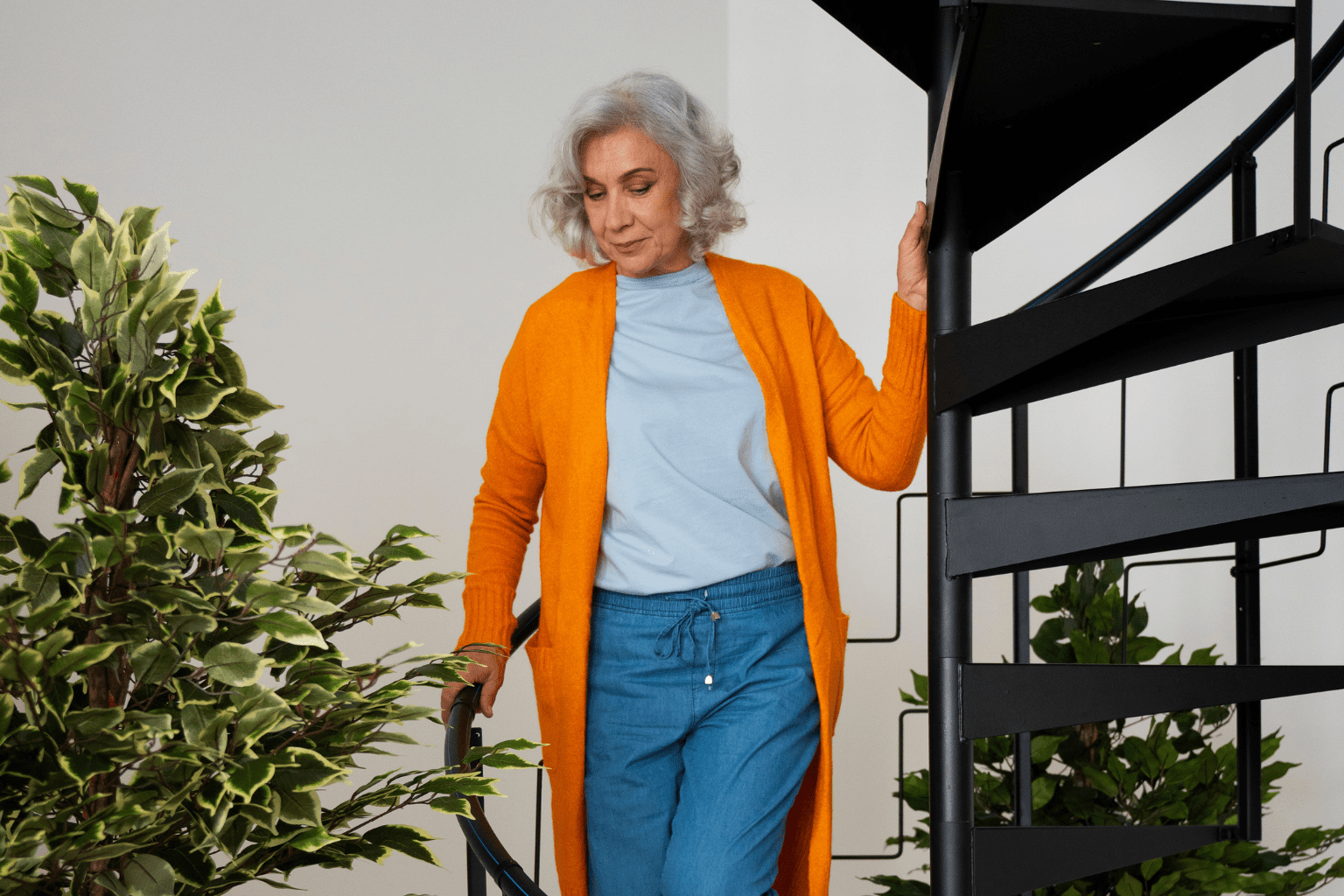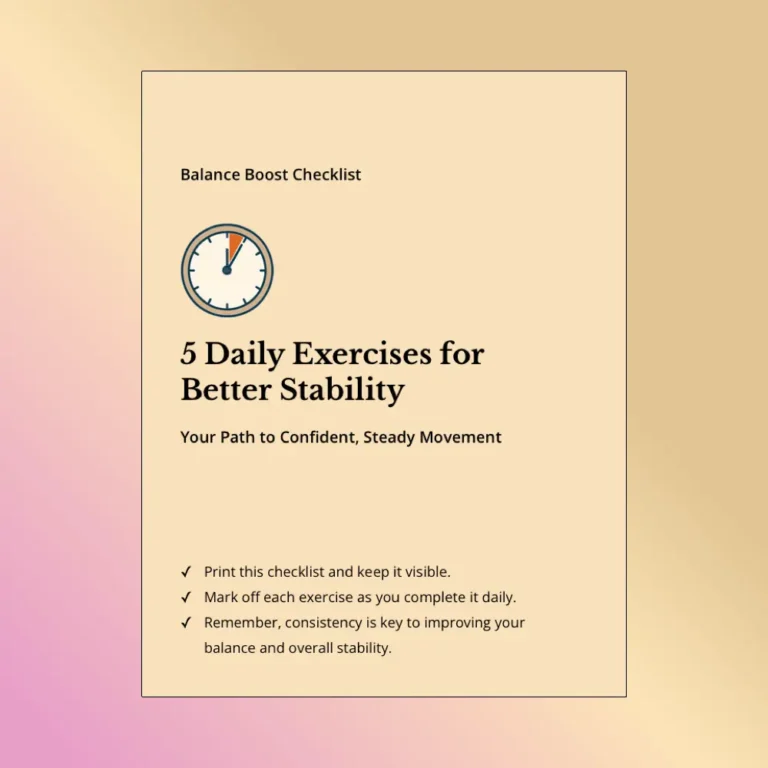
Highlights

Stairs can be dangerous obstacles in the home, especially for older adults. With one in four seniors experiencing a fall each year, making staircases safer becomes not just a good idea, but a necessity. This guide will walk you through practical insights on stair safety, modifications, and prevention strategies specifically designed for seniors, helping them maintain both safety and independence in their homes.
The numbers tell a concerning story. According to the CDC, falls are the leading cause of injury among older adults, with stairs being one of the most common places these accidents happen. Several factors contribute to these statistics: declining eyesight, reduced muscle strength, and even certain medications that affect balance can all make navigating stairs more dangerous. Stairs pose significant hazards that increase the risk of falls for older adults, making it essential to implement proper safety measures. Recognizing these statistics helps underscore why stair safety improvements should be a priority.
When an elderly person falls, the consequences go far beyond the immediate physical injuries. Falling down stairs often triggers a cycle of fear that can severely limit a senior’s independence. This fear frequently leads to decreased physical activity, which ironically increases the risk of falling even further. The emotional toll can be just as damaging as the physical one, often resulting in social withdrawal and isolation. These impacts affect not only the individual but also ripple through their family as well. Elderly individuals who experience falls may find it difficult to continue living at home without proper stair safety techniques.
Several key modifications can transform a dangerous staircase into a much safer passage for seniors:
For situations requiring more comprehensive solutions, these advanced modifications can dramatically improve stair safety for the elderly:
Not every safety improvement requires a major renovation or expense. Here are some budget-friendly options that can still make a big difference:
Keeping stairs free of clutter is one of the simplest yet most effective fall prevention strategies. Make sure stairs are clear from items like shoes, books, or decorative objects that could cause tripping. Additionally, placing stable furniture near the top and bottom of the stairs can provide convenient resting spots or support points when beginning or ending stair climbs. Proper home safety for seniors includes techniques for safely navigating stairs.
Proper lighting is essential for stair safety, particularly during evening hours or in naturally dark stairwells.
If you’re considering a stair lift, it’s important to understand the potential costs involved. Prices typically range from $2,000 to $5,000, including installation. Several factors affect the final price, including the brand, the specific features of the model you choose, and whether your staircase requires any custom modifications for proper installation. For seniors who may need assistance with ascending or descending stairs, this investment can help them maintain independence.
The cost of a stair lift might seem prohibitive, but there are ways to make it more affordable. It’s worth checking whether Medicare or Medicaid might cover part of the expense, as they sometimes provide coverage for mobility devices. Another option to consider is renting rather than buying, which can be more economical for those who need temporary assistance or want to try before making a permanent investment. Preventing falls in the elderly should be considered alongside these financial decisions.
1. What are some simple modification options to make stairs safer?
You can significantly improve stair safety with some quick and relatively inexpensive modifications. Adding non-slip mats to stair treads, installing secure handrails (ideally on both sides of the staircase), and improving lighting are all effective starting points that don’t require major renovations. These home safety measures for seniors can reduce the risk of accidents on stairs.
2. How much does a stair lift cost?
Stair lift prices generally fall between $2,000 and $5,000, depending on the specific model and your installation requirements. It’s worth shopping around and comparing different options to find one that meets your needs while staying within your budget. Some companies also offer financing options to make the purchase more manageable for providing a safe alternative to stairs.
3. What lighting improvements can enhance safety on stairs?
Good lighting is one of the most important aspects of stair safety for seniors. Motion-sensor lights are particularly helpful because they turn on automatically when someone approaches the stairs. LED strip lighting along the edges of steps can also make a big difference by clearly defining where each stair tread begins and ends, even in low light conditions. Nothing should be left on the stairs that could cause tripping hazards.
Personal stories often help illustrate the real-world impact of stair safety modifications. Take Margaret, for example, an 82-year-old who experienced a frightening fall on her staircase because of inadequate lighting. After recovering from her injuries, Margaret worked with her family to make her home safer. They installed handrails on both sides of her staircase, added motion-sensor lights that activate whenever she approaches the stairs, and eventually decided to invest in a stair lift. These changes have allowed Margaret to regain her confidence moving around her home, preserving her independence, and giving her family peace of mind.
For visual guidance on how to make stairs safe for seniors, watch this informative video on techniques for safely navigating stairs that provides excellent grip and support advice for older adults.
Learning proper techniques for navigating stairs can be just as important as physical modifications. Seniors should be encouraged to:
Another valuable resource for seniors is this detailed video on how to negotiate stairs safely, which demonstrates proper stair usage techniques that can prevent falling on stairs.
Stair safety is a critical concern for seniors, but taking proactive steps can dramatically reduce the risk of falling down stairs and injuries. From understanding the specific risks seniors face to implementing basic modifications like handrails and non-slip surfaces, to exploring more advanced solutions like stair lifts, there are options available for every situation and budget.
As you evaluate the stairs in your home or a loved one’s home, remember that these modifications aren’t just about preventing accidents—they’re about maintaining independence and quality of life. The ability to safely navigate stairs in one’s home is a significant aspect of aging in place with dignity.
Don’t wait for a fall to happen before taking action. Start by assessing your stairs today and implementing even small changes that can make a big difference. For more comprehensive protection, consider combining stair safety for seniors with other fall prevention strategies.
For additional information on keeping seniors safe from falls, you might find it helpful to read more about effective fall prevention exercises or learn what to do if an elderly person falls. With thoughtful planning and appropriate modifications, your home can become a safer place where seniors can maintain their independence for years to come. Remember that stair safety is crucial for safer living and providing additional support for seniors to maintain their mobility.
